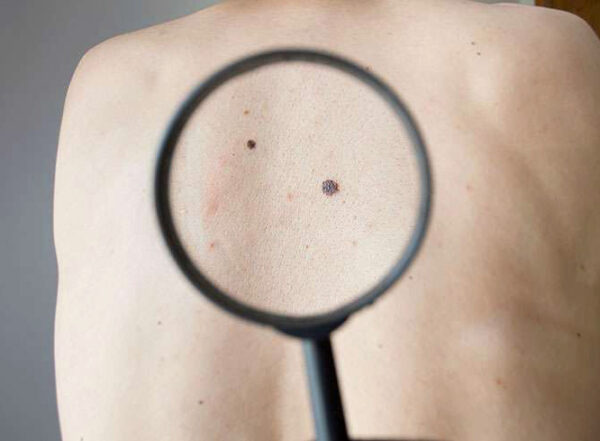Your Resources
Skin Cancer
Skin Cancer Treatment Huntsville Alabama and Other Locations
Skin Cancer

Skin cancer is cancer that forms in the tissue of the skin and is the most common form of cancer in the United States. There are several types of skin cancers that can be diagnosed depending on the location of the cancer. Over the past 30 years, more people have had skin cancer than all other cancers combined. Regular skin self-exams are recommended.
The most common symptom of skin cancer is a change to your skin. The symptoms of skin cancer depend on the type. The three most common types of skin cancer are basal cell carcinoma, squamous cell carcinoma, and melanoma. Symptoms of skin cancer will vary depending on the type. Please consult your healthcare provider if you notice any of the following symptoms:
Basal cell carcinoma symptoms – the most common type of skin cancer
- Reddish patch of dry skin that won’t heal
- Raised pearl shaped lump on the surface of the skin
- Pimple that doesn’t go away
- Soars that will bleed, go away, then reappear
- Flat or sunken growth
Squamous cell carcinoma symptoms – a common type of skin cancer that is caused from too much sun, exposure to radiation, or burns
- Hard crusty red pearl shaped lump on the surface of the skin
- Soar that will bleed, heal, then reappear
- Scaly patch of skin on the lip that won’t heal
Melanoma – the most deadly form of skin cancer and often appears in an existing mole or looks like a new mole
- Mole that is changing shape, color, or growing
- Mole that bleeds or is scaly
- Dark spot on the skin that looks like a mole
- Itchy spot on the skin that won’t heal and bleeds
- Brown or black streak under a nail bed
- Bruise on the foot that does not go away
An easy way to remember the symptoms of melanoma is to remember the A,B,C,D and Es of skin cancer.
A – asymmetrical (is it shaped irregularly)
B – border (is the border jagged)
C – color (is the mole darker in some areas)
D – diameter (is it larger than the size of a pea)
E – evolving (has it changed in the last few weeks or months)
Certain people are more likely to develop skin cancer. The presence of one or more of these risk factors does not necessarily mean a person will develop skin cancer. Please take sun exposure precautions or consult with your physician if you have one or more of the following risk factors:
- Lightly colored skin – Anyone can get skin cancer, however, those with less pigment in their skin provides less protection from damaging UV radiation from the sun
- Family history – If one’s parent or sibling has had skin cancer, they are at a higher risk of the disease
- Excessive sun exposure – Anyone who is out in the sun for long periods of time repeatedly is at risk for skin cancer, especially if the skin isn’t protected by sunscreen or clothing
- Previously diagnosed with skin cancer – Increases risk of developing skin cancer again
- History of sunburns especially early in life – Having one or more blistering sunburns as a child or teen increases the risk of developing skin cancer
- Freckled skin that burns, reddens or hurts in the sun
- Indoor tanning – A tan is your skin’s injury response to excessive UV radiation
- Blonde or red hair and light-colored eyes – More likely to develop skin cancer than a person with darker skin
- A large number of moles – It is important to pay attention to any moles one may have and see a physician if any moles increase in size, change shape, or change color
- Weakened immune system – Those living with issues that affect the immune system, such as HIV/AIDS, or those taking immunosuppressant drugs are at a higher risk of developing skin cancer
- Exposure to substances or radiation – Substances, like arsenic, can increase the risk of skin cancer. Radiation treatments for certain conditions can also increase the risk of skin cancer
It is important to consult your physician as soon as a symptom appears. Early detection helps increase survival rates. Be aware of the moles that are on your body and check them regularly for changes. If a mole starts changing, or another suspicious patch or lump appears on the skin, contact your healthcare provider for further evaluation and testing. Treatment of skin cancer depends on the type and stage. If the cancer has spread to other areas of the body, more aggressive forms of treatment may be needed. Some of the treatment options for skin cancer are:
Most types of skin cancer are preventable, below are some tips to help prevent this disease:
- Avoid or limit your time in the sun during the middle of the day
- Wear sunscreen year-round
- Wear protective clothing
- Avoid tanning beds
